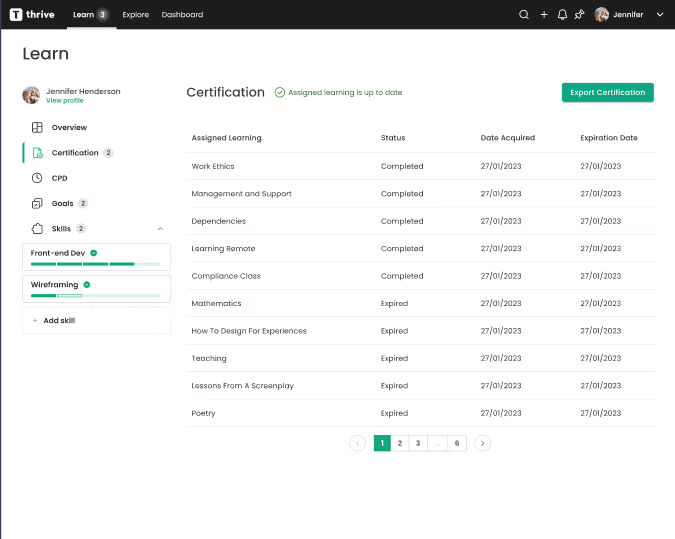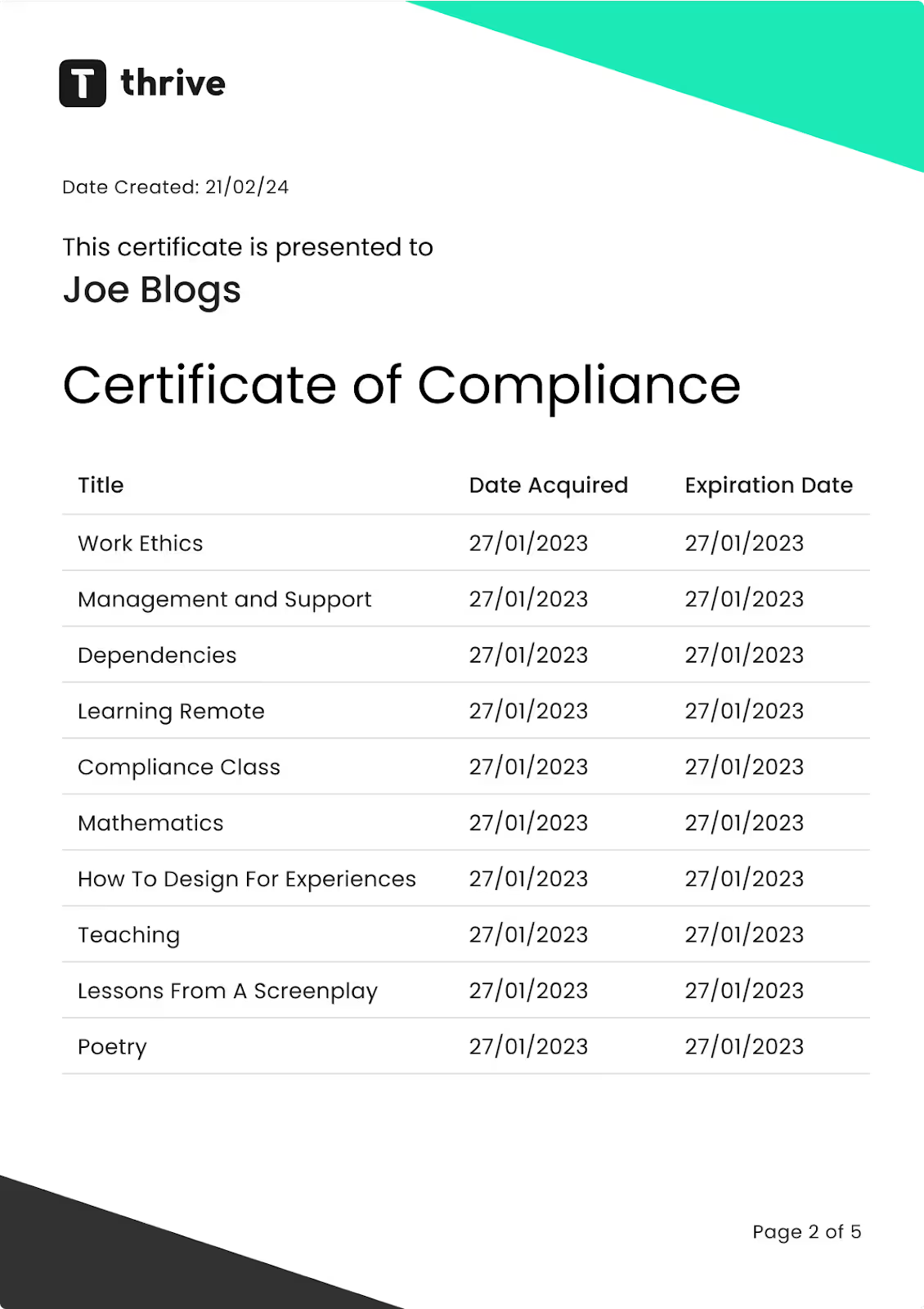The benefits of gamification in learning
Gamification in learning: what exactly is it, and how can it benefit your workplace learning and development strategy? Read our blog to find out how you can unlock the cheat code.

Gamification in learning is all about asking: How can learning be as fun as a game?
In the case of workplace learning and development, gamification is absolutely invaluable. It’s the key (the cheat code, if you will) to engaging people, and getting them invested in every stage of their training. Gamification’s effectiveness isn’t just exclusive to workplace learning - it extends beyond the workplace, into all areas of life.
For example, how many humblebrag Strava screenshots have you seen on your various social media feeds? How many times have you, after a haranguing from the vaguely sinister and passive aggressive owl, celebrated your progress up the Duolingo leaderboard? Or if you have an Apple Watch, jogged on the spot for a bit merely to complete the progress rings on the fitness app?
The satisfaction you feel from doing these things is not an accident; it’s by design. The competitive edge, the feeling of progress and reward, is what keeps you coming back. That, and the ever-divisive neurotransmitter dopamine. Dopamine has been getting some mixed reviews over the past few years for its contribution to social media and smartphone addiction, but it’s important to remember that its powers can be used for good.
When you complete a task, earn a badge, or any other achievements that are baked into the gamified learning process, your brain releases dopamine, which makes you feel happy and motivated. This is why it’s such a precious and useful thing to capitalise on: why wouldn’t you want to encourage your people to keep coming back to their professional development; keep climbing the leaderboard; feel happy and motivated while doing so?
If this is your introduction to gamification in learning, read on.
What is gamification?
So, what exactly is this miraculous concept? Let’s start at Level One, with the definition of gamification.
Gamification refers to the process of applying game-like elements (e.g. points, rewards, leaderboards and competition) to activities that wouldn’t ordinarily have them, in order to make the activities in question more appealing, fun and engaging.
Take our Apple Watch, Duolingo and Strava examples. You may not always be intrinsically motivated to go for your morning jog, or sit down and learn the Spanish for “Where is the library?” but those competitive elements - and let’s be honest, the desire for approval from your peers - motivates you to put in the hours. (Whether or not you’ll be visiting the "biblioteca" on your next trip to Barcelona is by-the-by.)
Gamification in learning
We think we’ve just about sold you on gamification by now - so let’s explore a few ways to use it in workplace learning.
It’s worth noting that if your workplace learning and development materials aren’t hosted on an LMS already, this is the perfect way to facilitate gamification. A gamified LMS will allow you to really run with these game-like elements, immersing your employees in a learning journey that is as fun, interactive and competitive as a game of Candy Crush.
Here are a few examples of gamification in workplace learning:
Leaderboards
It’s important to preface this point with the fact that every learner is different, and not everyone is motivated by the same things. But for those who are motivated by a healthy dose of competition, the results of mobilising that competitive streak might be even more effective than you think. Research by Ding-Chau Wang & Yong-Ming Huang compared the effectiveness of both “competition” and “collaboration” in learning, and saw competition come out on top:
“Perceived competition is a factor more significant than perceived collaboration behind learning performance, in which perceived competition directly affects perceived collaboration.”
You know, not that it’s a competition or anything…
Let’s gloss over the implications of this inherent human desire to “beat” our peers rather than “join” them, and focus purely on the positives. It’s obvious that some people are very motivated by the idea of winning, in whatever form that might take.
It follows, then, that your learning platform should enable leaderboards in order to encourage this. With a leaderboard, learners can see where their name falls on the hierarchy, celebrating as they climb further and further up the list - or putting in more learning hours to prevent their name falling down the list.
Either way, our friend dopamine is being released and a sense of motivation is being achieved.

Reward-based learning
We’ll explore certificates in depth later, but first let’s discuss the smaller rewards (or dopamine triggers) that take place along the learning journey.
When your learning platform enables rewards, achievements, badges or however you’d like to categorise them, you’re encouraging your people to engage with their learning. How? It all comes back to the value we place on public perception. When learners can outwardly display their progress, skills and knowledge within their user profile, they’re more motivated to chase after those achievements - and gain the recognition they deserve.
%2520Gamification%2520.avif)
Quizzes
Moving away from the “reward” part of gamification and onto the “participation” part, quizzes are a bit of a swiss army knife in your toolbelt; a workplace learning device with multiple benefits.
The first benefit of quizzes is that they serve as a way to lift up the learning and make it more engaging. Instead of merely reading the material, people are actively interacting with it. This is one of the keys to gamification: the feeling of active participation, rather than passive participation. With this sense of active participation comes even more advantages.
Unsurprisingly, quizzes have proven themselves to be essential to retention and recall. This study explored the use of “low-stakes retrieval practice” (that is, quizzes that didn’t impact the students’ grades but merely served as a way to enhance their learning) on students’ ability to recall information. Obviously this study concerns academic education, but its findings can very easily be applied to workplace learning and development.
The results speak for themselves. Students who took part in this “repeated learning” remembered 60% of the assigned material, compared to just 40% for those who didn’t.
So, how can you apply this in the workplace? Make sure that your LMS enables quizzes, and they can be used in a number of different ways. Everything from compliance, to testing commonly used words and phrases, to scenario-based tests that present work situations and have learners choose the best course of action - it’s all perfectly served with a quiz.
Certificates
The final pot of gold at the end of the rainbow, certificates are a great way for learners to demonstrate what they know and really drive home that sense of reward.
Providing certificates might seem like a relatively small deal to some, but it’s actually inextricably linked to a sense of motivation for learners. This study found that when certification is removed from elearning, completion rates are almost halved. Halved. That’s a very large percentage of your workforce that are ending up non-compliant or never even looking at the course in the first place.
So how do certificates work? Let’s take Thrive as an example.
With the certification feature, everyone can keep on top of their assigned learning - from managers through to end users. Admins have complete oversight over training, and learners can stay up-to-date by viewing an easy-to-read table of all their assignments.

Once it’s completed, that’s when the certificate comes in. Learners can export their certification statement as a PDF, which will show what they’re compliant in and the date they completed it. Nicely tying up the entire learning experience, certificates provide a final sense of completion for learners.

At Thrive, we continually research developing learning theories and apply those to our platform to help your learners get the very best experience possible. We’re constantly innovating and experimenting; just explore our product roadmap for full details of the features we’re bringing to life.

